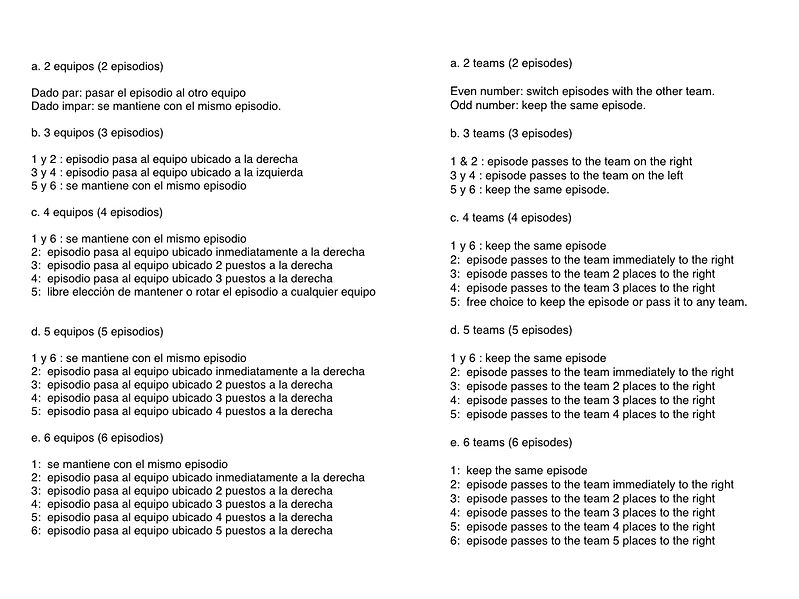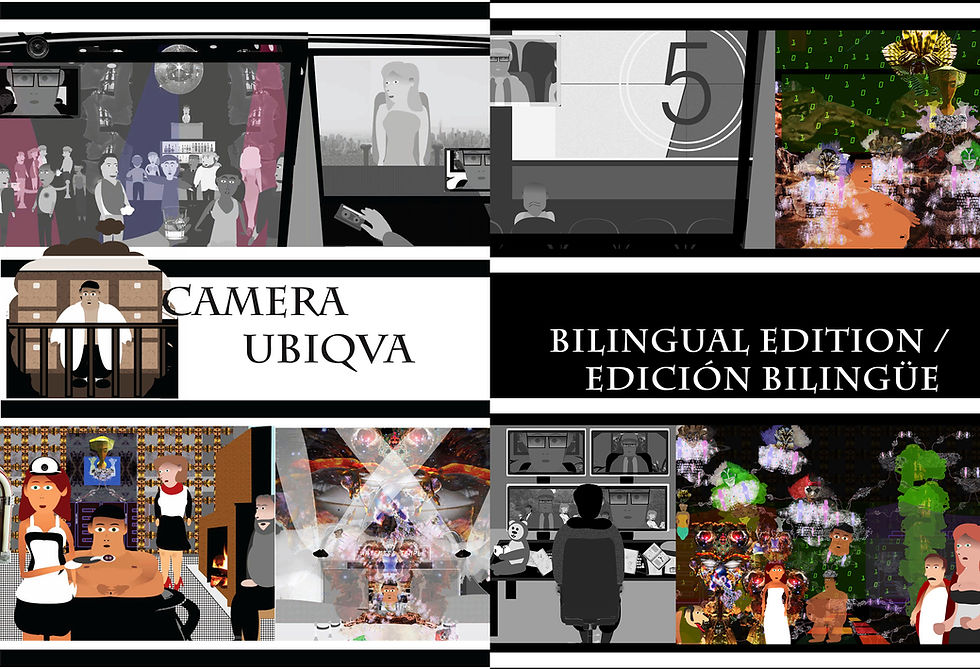mr2 books
by Mauricio Rivera R.
Libro No. 1 / Book No. 1
Note: the first draft of The Book of Giuliano was written during the first months of 2020. Apart from a few changes in form and style, the events presented in the future then imagined remain the same.
Nota: el primer borrador de El Libro de Giuliano fue escrito durante los primeros meses de 2020. Aparte de algunos cambios de forma y estilo, los eventos presentados en el futuro entonces imaginado son los mismos.
Distopías a la criolla / Dystopias in my backyard
Reglas / Rules
Invita a los jugadores a crear sus propias historias dentro del universo imaginado en la saga del MetAlgoritmo.
Nota: no es necesario leer las historias publicadas dentro de la saga, simplemente seguir las instrucciones de los diferentes escenarios presentados.
Pasos:
1. Conformación de equipos: máximo 6 equipos determinados de acuerdo al tamaño del grupo.
2. Asignación de episodios: los equipos reciben (de manera aleatoria), dentro de un conjunto de seis posibles episodios (dentro de una línea de tiempo que se extiende hasta comienzos del S. XXII) el escenario en el que deben empezar a crear la historia.
3. Crisis / conflicto: los equipos tienen 5mins (puede extenderse a 10mins) para presentar (en un párrafo de cuatro frases o menos o 3 viñetas) la crisis o conflicto que desencadena la historia. Este debe relacionarse a las circunstancias ‘históricas’ de los respectivos episodios.
4. Rotación (componente aleatorio): a partir de la asignación de episodios y presentación de la crisis / confilcto inicial, las historias empiezan a rotar entre los diferentes equipos, utilizando un dado de la siguiente manera:
Invites players to create their own stories within the universe imagined in the saga of the MetAlgorithm
Nota: it is not necessary to read the stories published within the sage, you just need to follow the instructions in the different scenarios presented.
Steps:
1. Team’s formation: maximum of 6 teams determined according to the size of the group.
2. Episode assignation: the teams receive (randomly), within a group of six possible episodes (within the a timeline that goes to the beginning of the 22nd century) the scenario in which they must start to create their stories.
3. Crisis / conflict: the teams have a standard time of 5 mins* (could be extended up to 10 mins) to present a crisis or conflict that set the story in motion (in either a paragraph with 4 sentences or less or 3 bullet points). It must occur within and relate to the ‘historic’ circumstances described in the given episode.
4. Rotation (random element): after the assignation of episodes and the presentation of the initial crisis / conflict, the stories begin to rotate amongst the different teams, using a die in the following manner:

5. Protagonista: al recibir el episodio con la crisis/conflicto, los equipos tienen 5mins* para presentar en la/el protagonista de la historia y responder: (a) ¿quién es? Y (b) ¿cuál es su relación con la crisis / conflicto? (en un párrafo de tres frases o menos por pregunta o 4 viñetas). Tras esto, se realiza una nueva ronda de rotación de episodios.
6. Resolución: al recibir (o mantener) el episodio + la crisis/conflicto + la/el protagonista, los equipos tienen 5mins* para presentar: (a) la manera como la crisis/conflicto es resuelta(o) y (b) el rol del/la protagonista en dicha resolución (en un párrafo de tres frases o menos por pregunta o 4 viñetas).
7: Componente geográfico (opcional): los equipos pueden aplicar restricciones geográficas (ej. ubicar sus historias dentro de un rango de no más de 1.000 km2 del lugar donde estén jugando).
5. Protagonist: After receiving (or keeping) the episode + the crisis / conflict, the teams have 10 minutes to think about the protagonist of the story and answer: (a) who is he/she? & (b) how is he/she related to the crisis / conflict? (in one paragraph per question, each one with 3 sentences or less or 4 bullet points). After this, there will be a new rotation of teams/episodes.
6. Resolution: After receiving (or keeping) the episode + the crisis / conflict + the protagonist, the teams have 5 mins to present: (a) how the crisis / conflict is resolved and (b) the role that the protagonist has in the resolution (in one paragraph per question, each one with 3 sentences or less or 4 bullet points).
7: Geographic component (optional): if this component is chosen, the teams must locate their stories within 1.000 km2 of the place where they are playing the game.
Episodios / Episodes


Virus Compunósico / Compunosic Virus

Nueva Bogotá / New Bogota

Referendo Global / Global Referendum

Neo-nomadismo / Neo-nomadism

Implosión Sub-atómica / Sub-atomic Implosion

¡La Vacanal!

B.I.B.O.
[Haga click en las imágenes para conocer el episodio
Click on the images to learn about the episode]
Obras complementarias / Complementary works
Recursos relacionados / Related resources

Ensayo

Essay

Novela / enlace

Essay

Essay





